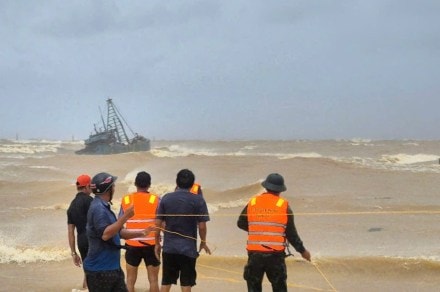Airports were shut and hundreds of thousands evacuated as Typhoon Bualoi raced toward Vietnam on Sunday. The storm has continued to intensify since it caused at least 10 deaths and widespread flooding in the Philippines earlier this week. Three fishermen have also been reported missing after their vessels sank off the coast of Quang Tri province while several others were rescued ahead of the typhoon.
Hundreds of thousands evacuated
According to reports, local authorities have already evacuated evacuated thousands of people from the central and northern provinces. State media reported Da Nang alone planned to relocate more than 210,000 people, while Hue prepared to move more than 32,000 coastal residents to safer ground. Authorities in the central province of Ha Tinh have started to evacuate more than 15,000 people.
Vietnam has also banned fishing boats from going to sea in these areas and mobilised around 100,000 military personnel to help evacuation efforts. The Civil Aviation Authority has suspended operations at four coastal airports — including Danang International Airport — with several flights rescheduled.
Typhoon Bualoi is currently at sea and generating 130km/h winds. As per the meteorological agency, it is expected to make landfall later on Sunday. It had swept across central Philippines and southern Luzon as a tropical storm on Thursday — killing 10 people and causing widespread flooding. This came even as the northern part of the country continued to recover from the impact of a super typhoon.
“This is a rapidly moving storm – nearly twice the average speed – with strong intensity and a broad area of impact. It is capable of triggering multiple natural disasters simultaneously, including powerful winds, heavy rainfall, flooding, flash floods, landslides, and coastal inundation,” the national weather forecast agency of Vietnam added.
Second major storm to hit Asia within a week
Bualoi was the second major storm to threaten Asia in a week. Typhoon Ragasa, one of the strongest to hit in years, caused at least 28 deaths in the northern Philippines and Taiwan, mostly drownings, before making landfall in China and dissipating Thursday over Vietnam.
Global warming is making storms like Wipha stronger and wetter, according to experts since warmer oceans provide tropical storms with more fuel, driving more intense winds, heavier rainfall, and shifting precipitation patterns across East Asia.
